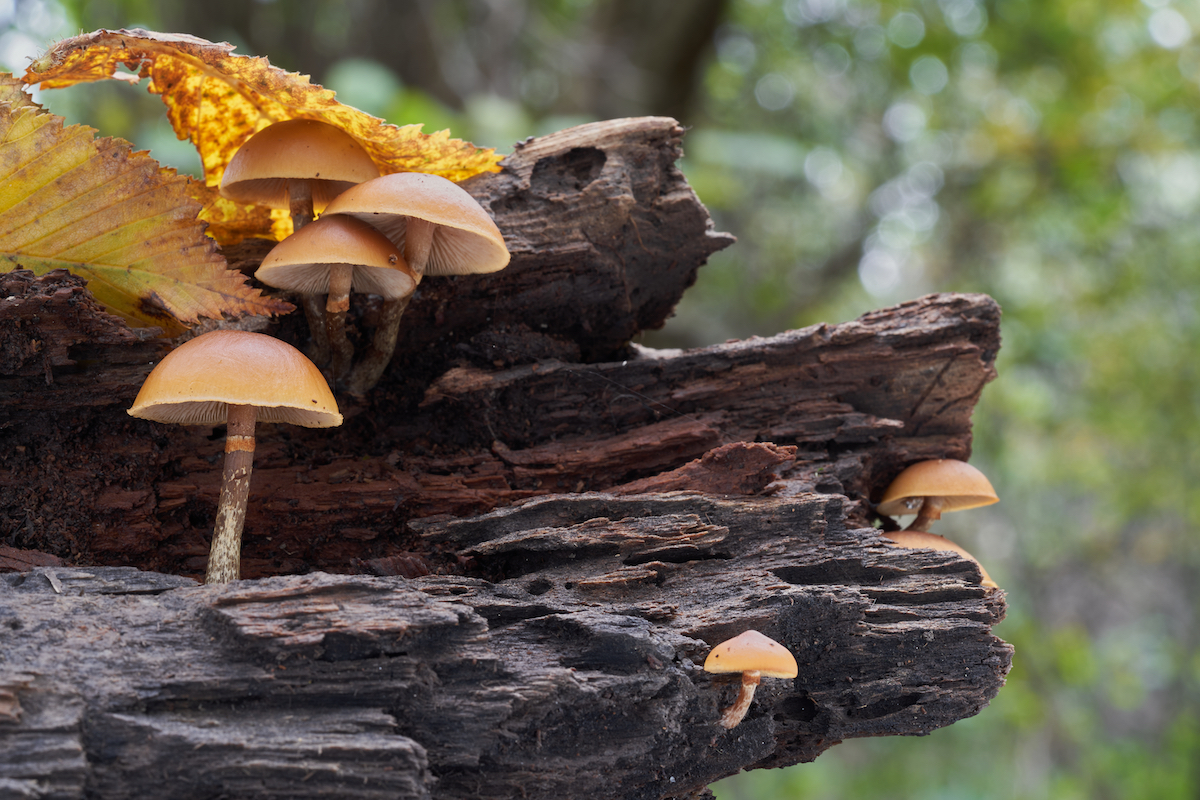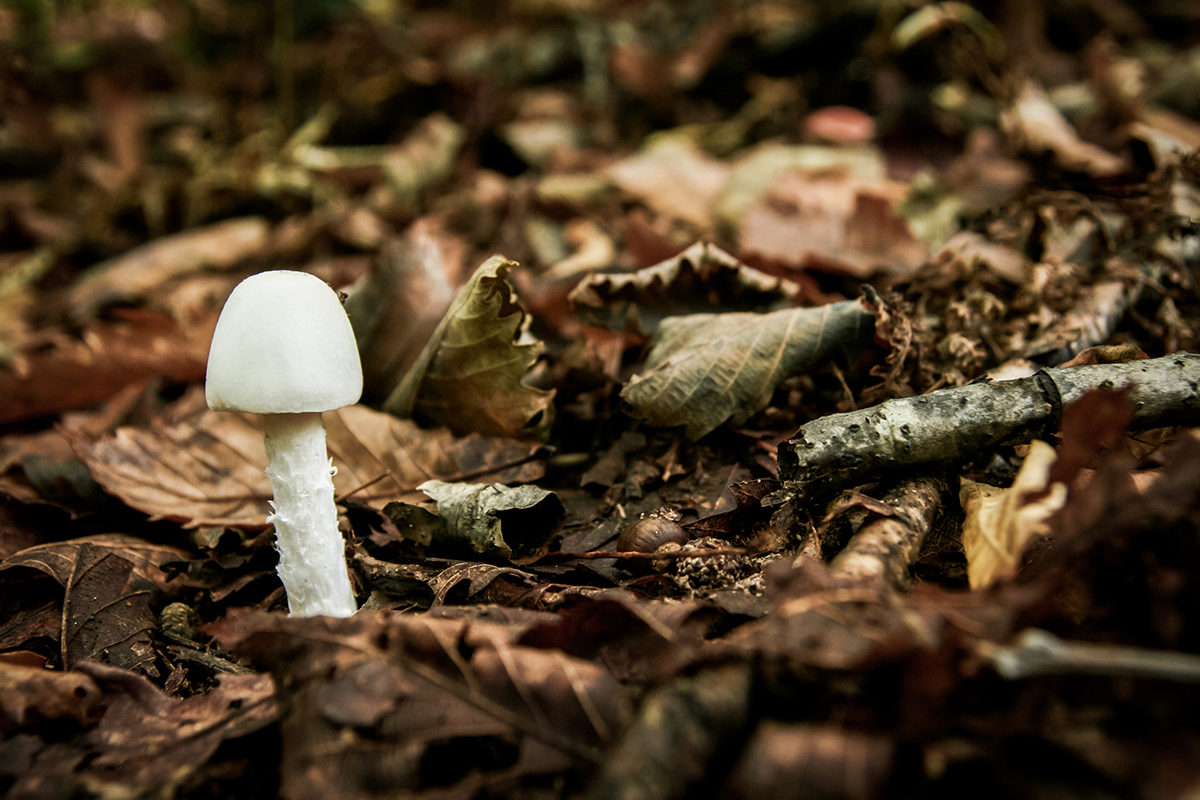

Whether you’re a blossoming forager who enjoys searching for shrooms in the great outdoors or an experienced one, pay attention. There are good mushrooms, and there are bad mushrooms—and by bad, we mean deadly.
Videos by Outdoors
The British Columbia Centre for Disease Control says there are about 250 species of poisonous wild mushrooms in North America, and they field about 200 calls per year related to wild mushroom-related exposures.
How can you know a safe mushroom from a dangerous one?
You’ve heard of the foolproof four, but here are the fatal five. These murderous mushrooms should be avoided at all costs . . . or else. Learn how to identify them in the wild to keep you and your group safe in the great outdoors.
Disclaimer: There are many toxic mushroom species. Forage at your own risk, and always educate yourself before eating anything you forage from the wild.
The Fatal Five Mushrooms:
- Death caps
- Destroying angels
- Deadly galerinas
- Deadly webcaps
- Poison fire corals
Death Caps

Death cap mushrooms, which are in the Amanita family, are responsible for the majority of mushroom-poisoning deaths worldwide. Death caps contain potent toxins that can cause severe liver and kidney damage. Sadly, consumption is often fatal.
Death cap mushrooms were recently in the news after three luncheon guests died in Australia after being served a home-cooked meal containing death cap mushrooms. A fourth person is currently in critical condition, and the hostess is even under investigation for murder.
Death caps typically have an off-white cap, often with a yellowish or greenish tint, and a tall stalk that is a shade lighter than the cap. Mature death caps have a flat cap, while immature death caps have rounded, bowl-shaped caps. Look for distinguishing characteristics like thin white gills on the cap’s underside, a sheath-like structure around the bottom of the stalk, and a skirt-like structure at the top of the stalk, just below the base of the cap.
Destroying Angels

Similar to death caps in many ways, the destroying angel is another deadly mushroom that causes severe organ damage. Also in the Amanita family, destroying angels’ biggest difference from death caps is that they’re all white; they lack that yellowish or greenish tint often seen in death caps.
To identify a destroying angel mushroom, watch for the all-white coloration, a sheath around the base of the stalk (this may be underground), a loose skirt-like sheath around the top of the stalk, and thin white gills. It’s possible the gills may still be covered by the sheath, but if you break the mushroom open, you’ll see white gills, if it’s a destroying angel.
Destroying angel mushrooms also have some texture to the stem, which are like stretch marks that have formed as the mushroom grew. They’re beautiful but deadly.
Deadly Galerinas

Like the first two mushrooms in the fatal five, the deadly galerina contains amatoxins that’ll kill a human by liver failure. Also known as the funeral bell, the deadly galerina is in the Hymenogastraceae family, and it is brown or chestnut in color. The cap is rounded but flattens with age and often looks wet or shiny.
Deadly galerinas grow on wood and have a distinct white ring around the upper section of the stalk. Even still, they can be hard to identify and appear similar to other little brown mushrooms that are edible. When in doubt, throw it out.
Deadly Webcaps

The deadly webcap (in the family Cortinariaceae) kills by a different weapon: orellanin. Like amatoxins, orellanine is a poisonous compound that wreaks havoc on a human’s kidneys and liver. Terrifyingly, it can take weeks after consumption for symptoms to initially appear.
Deadly webcaps are among many mushroom species that have orangey-brown caps, so beware. To identify a deadly webcap, look for a dry, almost scaly cap surface characterized by the presence of an “umbo” or raised area in the middle of the cap.
The stem, which is typically bowed, is also orangey-brown with slight zig-zag markings. Young deadly webcaps have a webbing that connects the stem to the bottom edge of the cap. Mature specimens have rusty-brown, widely spaced gills.
Poison Fire Corals

If you live in or are visiting Asia, don’t touch (and certainly don’t eat) the Podostroma cornu-damae, a bright red mushroom with toxins that, unlike the other mushrooms on this list, can be absorbed through the skin. (Be on guard if you’re in Australia, too, because it’s also been found there.)
The poison fire coral mushroom does not have a stalk-and-cap structure, but rather, its fruiting bodies (mushrooms are a fungus’s fruit, after all) look like red fingers poking out of the ground. The terrifying symptoms of ingestion include brain shrinkage, peeling skin, and eventual death.
BONUS: Brown Rollrims

As a borderline deadly species, some toxins in a brown rollrim mushroom can be cooked out (if cooked properly), but there appears to be more to this shroom than meets the eye. Toxic effects of consuming brown roll-rims appear to be cumulative and, even when cooked thoroughly, a buildup of these toxins can cause extreme reactions and death. Why test fate?
You can tell a brown rollrim by its flattened, brown cap with edges that roll under the cap toward the gills. When wet, the cap gets slimy. Brown rollrims grow in lawns in some parts of the world, and they’re similar in appearance to edible milkcaps.
When foraging for edibles in the wild, it’s critical to educate yourself first about what’s growing in the area—both the safe and the dangerous things, so you know what to watch out for. If you’re not sure, do not consume. Mushrooms may be fascinating, but they can also be deadly.









